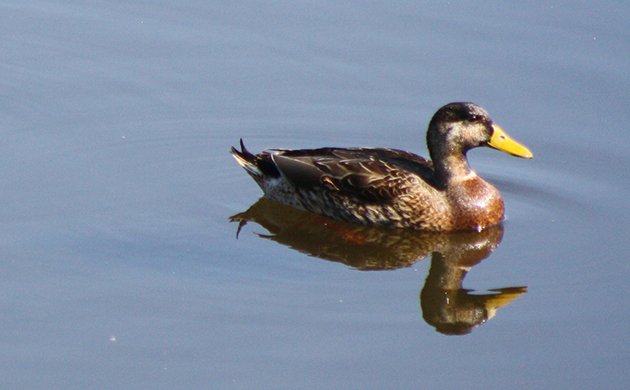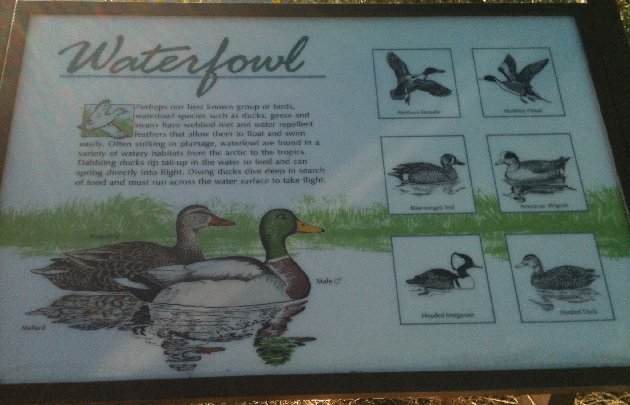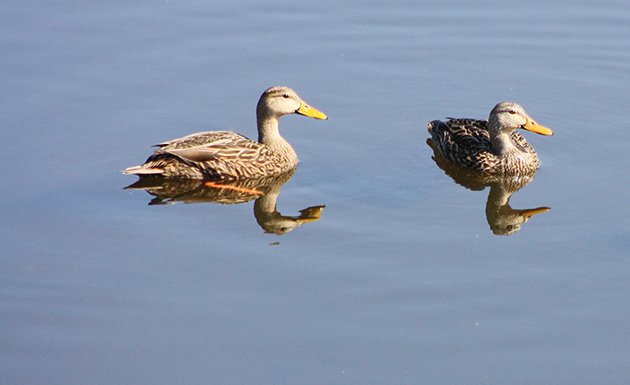
Florida is known as the Sunshine State. It is also known for the 500 exotic species of animals and plants that now call the Sunshine State home. Exotic species are animals that did not historically occur in Florida. Most were introduced, meaning they were brought to Florida by humans. One such species is the familiar mallard (Anas platyrhynchos). Resident mallards are considered an “exotic duck” in Florida and have the potential to drive the native mottled duck (Anas fulvigula) to extinction through hybridization.
Wild mallards normally winter in Florida in widely scattered, small flocks and are seldom seen in large concentrations except in some of the northern counties. These wild birds migrate out of Florida to northern breeding areas in the spring and are not present in Florida during the mottled duck breeding season. However, captive-reared mallards are being unlawfully released by humans in large numbers in Florida. It is estimated that more than 12,000 mallards are purchased statewide from feed-and-seed stores and potentially are released each year. These domesticated mallards are being purchased by well-intentioned individuals and are being released on local ponds, lakes and canals for aesthetic reasons.
Currently, these domesticated mallards can be found year-round throughout Florida on water bodies at city and county parks; apartment and condominium complexes; and in other urban and suburban areas.
State biologists are observing more and more mixed flocks and mixed pairs in the wild and these feral mallards are mating with mottled ducks, producing a hybrid offspring. These hybrid offspring are fertile, which further compounds the problem. An estimated 7 to 12 percent of mottled ducks are already exhibiting genetic evidence of hybridization and biologists list this hybridization as the biggest immediate threat to the conservation of Florida’s mottled duck.
Mottled Ducks apparently genetically intact. The featured photo above shows a hybrid bird.
Because of the relatively small size of the mottled duck breeding population (estimated at 30,000 to 40,000), the complete hybridization could result in the extinction of the Florida mottled duck.
History has proved that the concern over the loss of the Florida mottled duck to hybridization is a real one and should not be taken lightly. Mallard releases in other parts of the world have devastated local populations of closely related species. The New Zealand Grey Duck is nearly extinct as species. Approximately 95 percent of the native Gray Ducks in New Zealand are hybrids. Mallards did not occur in New Zealand naturally, but were released to provide hunting stock. The Hawaiian Duck is most likely completely hybridized on the island of Oahu, and may be genetically intact only on the island of Kauai. The Meller’s Duck is highly endangered in its native Madagascar. The remaining birds are being hybridized by introduced mallards. The situation in Florida with mottled ducks and feral mallards is comparable to these examples in that we have a small, isolated population that is closely related to the mallard.
What Is Being Done?
The release of mallards is prohibited in Florida under 68A-4.0052 of the Florida Administrative Code (FAC). Additionally, permits are needed for anyone to possess, buy or sell mallards in Florida. State and Federal agencies work on reducing the number of mallards in Florida. Mottled Duck and Muscovy Ducks live side by side in canals, and ponds in urban areas. State biologists believe though that the best way to reduce these releases and the resulting hybridization is through public information and education campaigns.

I found a little ironic on my last trip to the Merritt Island National Wildlife Refuge in Titusville, Florida. Merritt Islands support one the largest concentration of wintering ducks in South Florida and receive thousands of visitors. The most visited wildlife observation trail in the refuge shows a pair of Mallard as featured species with other migratory and resident ducks including the Mottled Duck itself. There are thousands of American Wigeons, Northern Pintails, and Blue-winged Teals wintering there. I have never seen or heard people talk about Mallards in the Refuge, yet unless there is a rational behind this move, Mallards made it to such prominent sign at the refuge.












It’s going to be a tough fight. Expect to hear lots of animal rights campaigners comparing biologists to Nazis for “espousing genetic purity”. That’s what happened when
Here in New Zealand the Grey Duck is effectively extinct due to hybridization with Mallard, but it should be noted it is a subspecies, not a species. They are currently fine over in Australia, and for that reason no efforts are being made to save them here.
Sorry, pressed post comment too quickly. I meant to say “That’s what happened when the British culled Ruddy Ducks to protect Europe’s White-headed Ducks”.
Duncan, I can see the argument being made about genetic purity. Here, the main problem hindering this issue, in my view, is that people protest against the capturing and shooting of the ducks they like to see in ponds and canals. Indeed it is going to be a tough fight.
Another threat from pen-reared Mallards is that they form “disease reservoirs” in the warm weather months when most wintering waterfowl are absent.
Good point Nate. I had not thought about disease nor I had run into the threat of disease when I was reviewing the literature about this issue. The threat of disease is a real problem and one that we often fail to realize until after the damage has been done.
Interesting that no mention of the Muscovy Duck. I have lived in Florida all my life and everywhere you go the above duck has supplanted all other ducks.
I remember seeing all types of duck species, but no longer.
The Muscovy has almost totally replaced all other type ducks.
So, I live in a complex in Clearwater. I see mottled ducks all the time and feed the ducklings. Yesterday, 4/13/16, all of a sudden a hybrid mottled and a mallard show up. Is there someone I should call to pick up these birds so they do not mate with other mottled ducks?
Nice and very Interesting post is all about Mallard